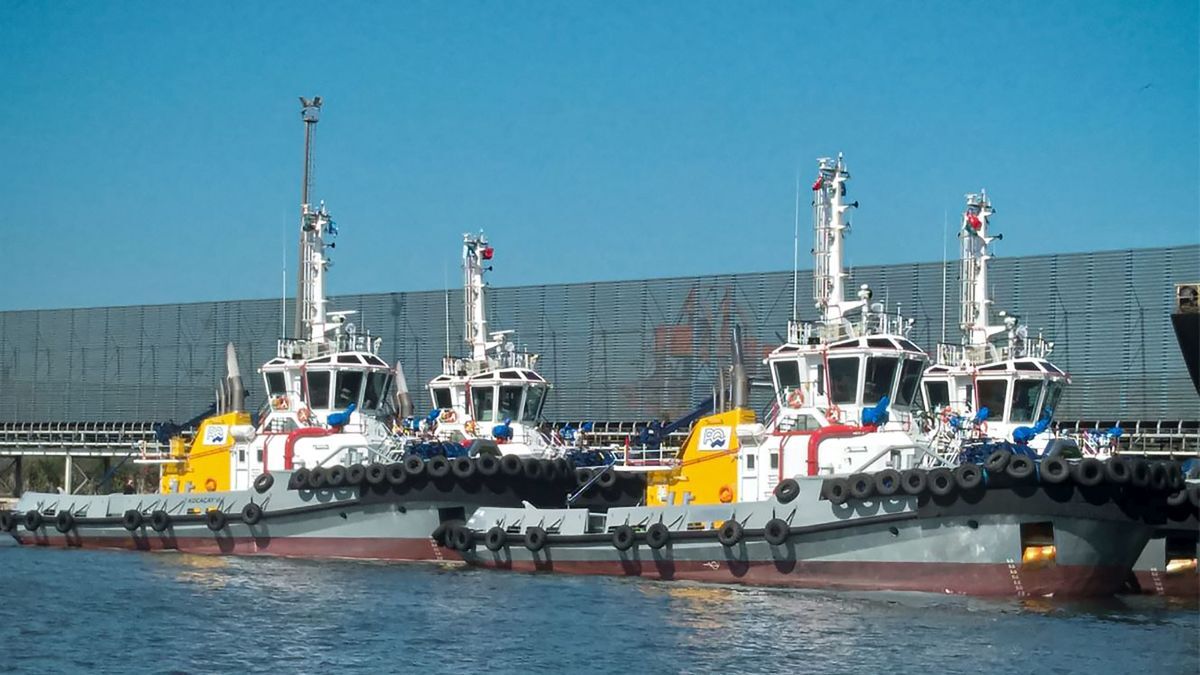Growing demand for electric-powered tugs and longer waiting times for engines meant new capacity was required
Turkish tug builder and owner Sanmar is investing in new facilities at its shipyards and preparing a third yard to ramp up production levels to keep up with technology advances and shipbuilding demand. There is rising interest in tugs operating on alternative fuels and batteries, a need for more powerful vessels and longer lead times for propulsion systems.
“We have purchased our neighbouring shipyard in Tuzla and we are converting it to a newly designed and built shipbuilding facility,” says Sanmar vice president Ali Gürün, who expects to have all relevant licences and to commence tug construction at the yard in Q4 2022.
“We are hoping the first tug will leave this new yard early 2024, and we expect this shipyard to increase capacity to four to six tugs per year,” says Mr Gürün.
Sanmar is also investing in its existing shipyards with a new 1,000 m2 steel production hall and a 2,000 m2 tug production hall, plus more offices, being completed in its Altinova facilities.
“This new 2,000 m2 shed will accommodate four newbuild tugs at any time and will be ready by the end of the year,” says Mr Gürün. “These two new halls will enable us to build six to eight more tugs every year. We expect to reach a production capacity of 50 tugs per year in 2025.”
Sanmar already has 10,000 m2 of tug production halls in Altinova and a 4,000 m2 production hall in Tuzla, plus a 4,000 m2 steel production hall at its OSB facility, all in Turkey.
Investment in the new shipyard was needed to construct electric-powered tugs and more capacity was required to house newbuildings already on the production line.
“Big changes in the delivery schedules of engines and thrusters means the time to build a tugboat is increasing, leading to more tugs under construction simultaneously, so we need more space,” says Mr Gürün.
Tug builders are on the cusp of the latest changes in vessel power requirements, driven by growing interest in reducing emissions and the maritime sector’s carbon footprint.
Sanmar is building three electric-powered tugs for Haisea Canada, one for Norwegian owner Bukser og Berging and one for its own fleet. “Two more are under construction for two different clients,” says Mr Gürün. “We are also building two LNG-fuelled tugs for Haisea.” All of these are to Robert Allan Ltd (RAL) designs.
“We have signed an agreement with a major engine manufacturer to develop methanol-fuelled tugs. This will take time compared with solid orders for electric and LNG-powered vessels.”
New tug designs
Sanmar is also building the first TRAnsverse tug, designed by RAL and Svitzer. “It may be a good alternative to tractor tugs and rotor tugs. Time will tell,” Mr Gürün adds.
Sanmar’s main orders are for azimuth stern drive tugs, but it also produces tractor tugs. “We continue getting orders for TRactor tugs, especially 25 m [overall length]. “We have already delivered 30-m TRActor tugs when requested.”
Another trend Mr Gürün highlights is growing demand for tugs complying with IMO Tier III emissions requirements, inside and outside of regional emission control areas. This is one of the factors driving Sanmar and RAL to introduce second-generation tug designs.
RAL and Sanmar developed a new version of the RAmparts 2400SX design, which will replace the first generation. “We have stopped producing RAstar 2800 and now building RAstar 2900SX tugs,” says Mr Gürün.
“RAstar 3200W were also phased out and RAstar 3200SX became the biggest of our standard tugs.” In 2023, Sanmar and RAL will develop a new version of Ramparts 2200SX, and the old version will be phased out.
“New-generation tugs have more beam, more accommodation space, better stability, higher bollard pull, better escorting abilities and IMO Tier III options,” says Mr Gürün. “All new-generation tugs have more standardisation on design and equipment. We will also have ice-class tugs available off the shelf next year.”
Sanmar can offer electric tugs in multiple overall lengths. It is constructing tugboats with batteries on board to 22 m, 23 m and 28 m. It intends to develop electric powered tugs to 19 m and 25-m lengths in 2023.
In 2022, Sanmar delivered a fleet of RAstar 3200SX design escort tugs and two pilot boats to Port Qasim Authority (PQA) in Karachi, Pakistan. These were part of PQA’s ongoing investment in the port complex, which includes enlarging Port Muhammad Bin Qasim and opening new LNG import infrastructure.
These Kocacay-series vessels are azimuth stern drive (ASD) tugs, classed by RINA with FiFi fire-fighting systems. Gharo, Malir and Korangi each have two 2,350-kW main engines and a bollard pull of 76 tonnes. Pipri has two 2,525-kW main engines and a bollard pull of 85 tonnes.
Sanmar also built a series of harbour tugs for SAAM Towage’s Latin American operations. The latest of these is SAAM Condor, a RAmparts 2400SX Bogacay-class with a pair of Caterpillar-manufactured Cat 3615C main engines driving Kongsberg azimuth thrusters, delivering a bollard pull of 70 tonnes.
This is similar in design to vessels already provided by Sanmar to SAAM Towage – Halcón III in Chile, Albatros in Peru and SAAM Palenque in Panamá. Sanmar also delivered Bigacay-class Mataquito II for operations in Chile.
Svitzer added an ASD harbour tug, Sanmar-built Svitzer Rivas, to its fleet in the Dominican Republic, May 2022. This RAmparts 2400SX tug has two Caterpillar main engines, each developing 2,350 kW of power.






